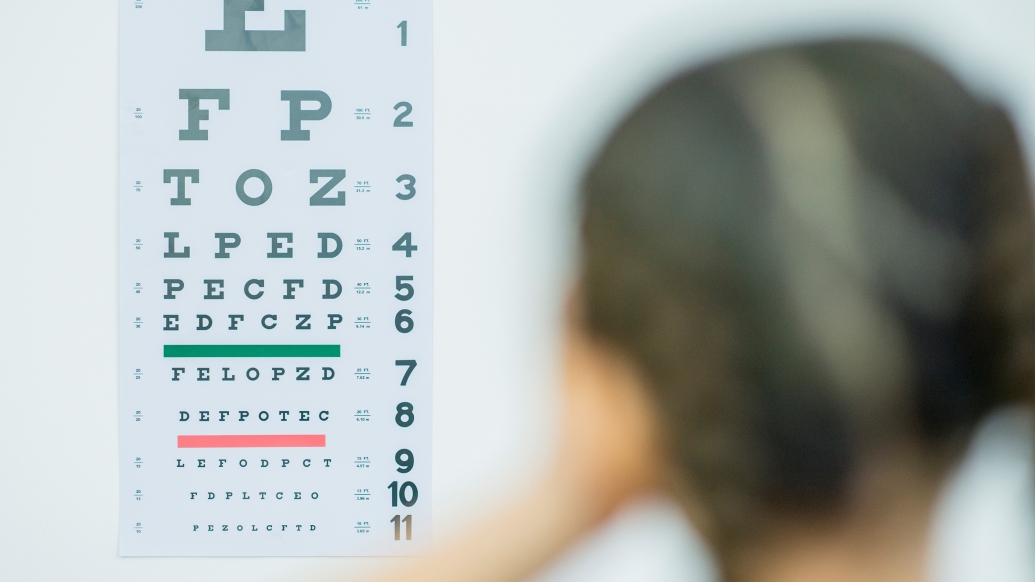Children with Medicaid or other public insurance far less likely than those with private insurance to have had a vision check in the last year at a primary care office
5:00 AM
Author |

Less than a third of children have gotten their vision checked in the past year at their regular primary care clinic, a new study finds.
Rates of eyesight screening in kids vary widely by insurance status, the study shows, with the lowest rates among uninsured children (18%) and those with “safety net” public insurance for people with low incomes (28%).
But even children with private insurance, such as from a parent’s job, had only slightly higher rates of screening, at 34% in the past year, according to the study in JAMA Ophthalmology by a University of Michigan and Duke University team.
Screening rates are highest, but still low, in children between the ages of 3 and 5, the study shows. They’re part of the age group covered by a national universal vision screening guideline, because of the importance of spotting amblyopia, or “lazy eye”, early and treating it.
But even in children in this age group who have private insurance, just over 41% had their vision screened at their regular primary care clinic or pediatrician’s office in the last year, the study finds. That’s compared with about 35% of those with public insurance and 30% of those with no insurance.
In elementary school-aged children, screening rates were five percentage points below the rates for preschoolers across the board. And only 25% of privately insured middle-school and high-school-aged children, and 20% of their publicly insured and 17% of their uninsured peers, had their vision checked recently by their regular health clinic.
The study looked at data from nationally representative surveys of parents conducted by the federally funded National Survey of Children’s Health from 2018 to 2020.
Parents were asked if their children had had a check of their ability to see letters, pictures or shapes on a standard eye chart during the past year at their pediatrician’s office or regular doctor’s office.
“Well-child visits, and other annual checkups such as school or camp physicals, are critical opportunities for catching eye-related issues in children that can have lasting consequences for their education and lives, and these data clearly show room for improvement,” said Olivia Killeen, M.D., M.S., who performed the study while she was a National Clinician Scholar at the U-M Institute for Healthcare Policy and Innovation and Kellogg Eye Center. Killeen is now a clinical fellow in pediatric ophthalmology at Duke Health.
Underlying the disparity by insurance status is a disparity in primary care visits focused on prevention and early detection. Only 46% of uninsured children had had a preventive health care visit with their regular provider in the last year, compared with 81% of privately insured children and 73% of publicly insured children.
Children with special health care needs – who may be eligible for full or partial health insurance coverage under the Children’s Health Insurance Program or CHIP even if their parents or guardians make too much money to qualify for Medicaid – had very low rates of vision screening. Only 28% of those with public insurance, 19% of those with private insurance, and 12% of those who are uninsured had their vision checked in the past year.
In addition to Killeen, the study’s authors include senior author Joshua Ehrlich, M.D., M.P.H., an assistant professor in the Department of Ophthalmology and Visual Sciences at Michigan Medicine, research assistant professor at the U-M Institute for Social Research and IHPI member. Other authors are IHPI member and U-M Internal Medicine researcher HwaJung Choi, Ph.D.; Niharica S. Kannan, a U-M undergraduate student; and two from the University of Utah, Afua O. Asare, O.D., Ph.D. and Brian C. Stagg, M.D., M.S., who is also a U-M NCSP alum.
The study was funded by the U-M NCSP and by a grant from Research to Prevent Blindness.
Paper cited: “Association Between Health Insurance and Primary Care Vision Testing Among Children and Adolescents,” JAMA Ophthalmology. DOI: 10.1001/jamaophthalmol.2023.3644

Explore a variety of health care news & stories by visiting the Health Lab home page for more articles.

Department of Communication at Michigan Medicine
Want top health & research news weekly? Sign up for Health Lab’s newsletters today!





